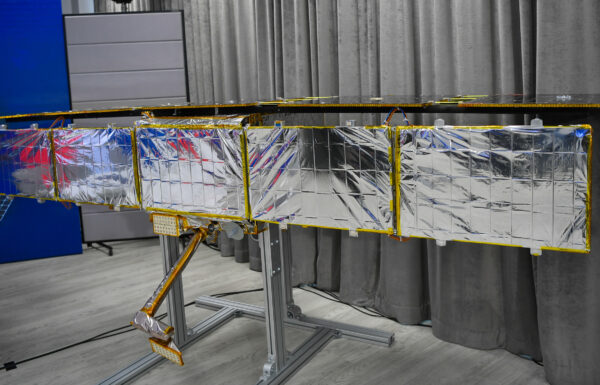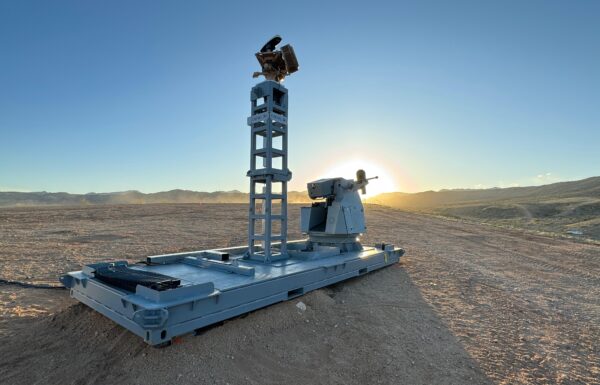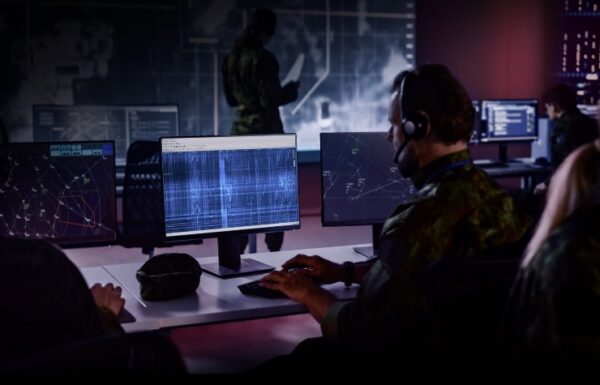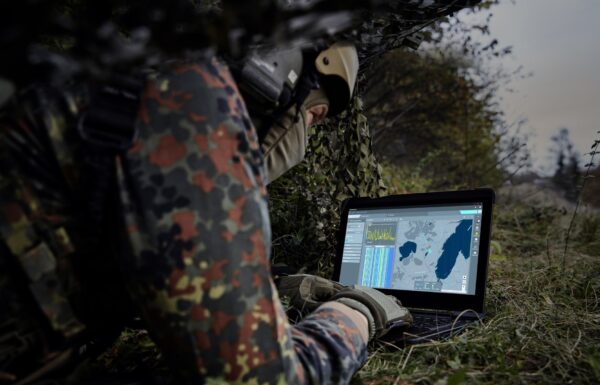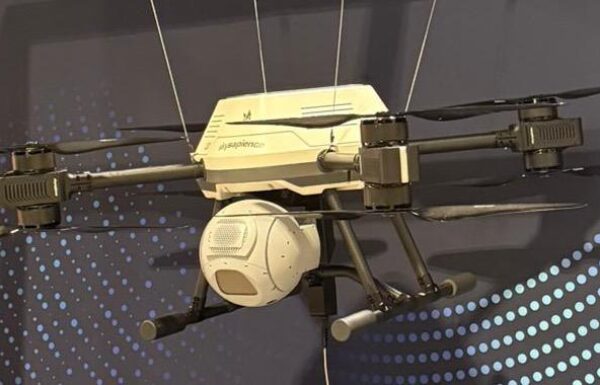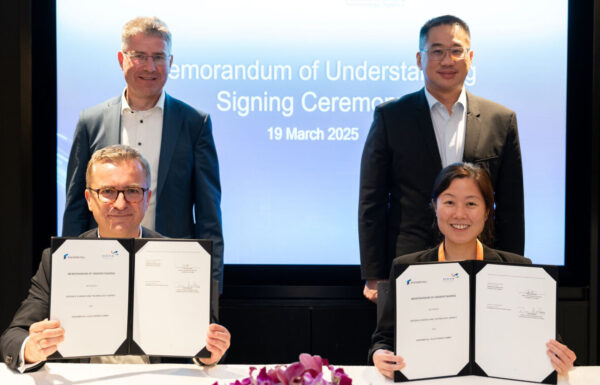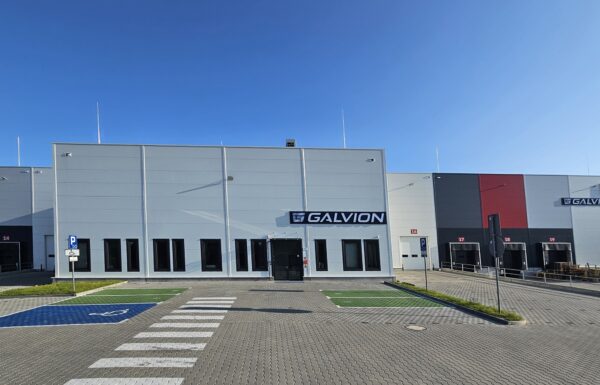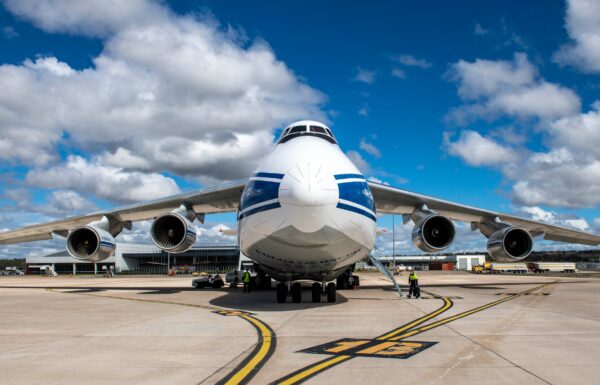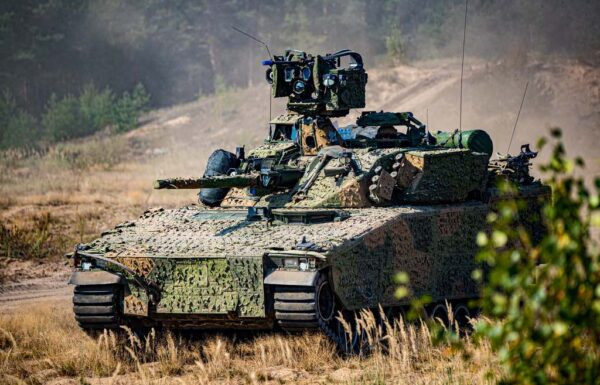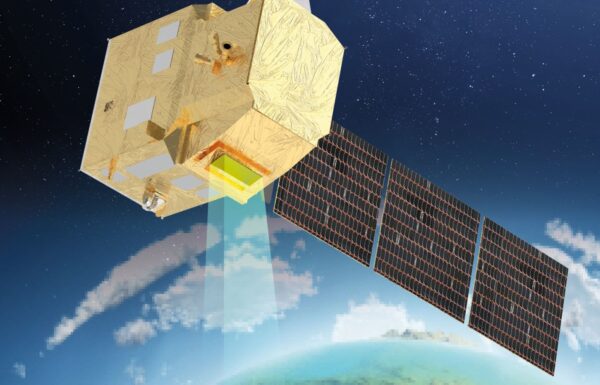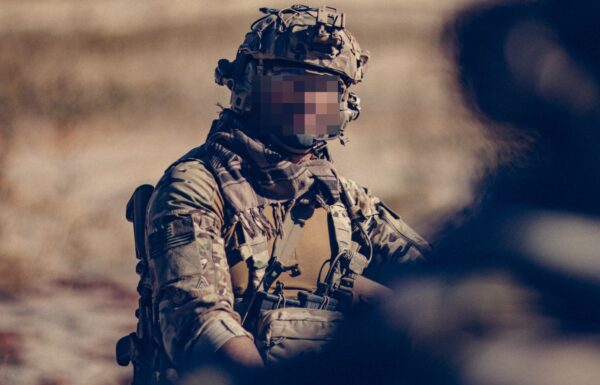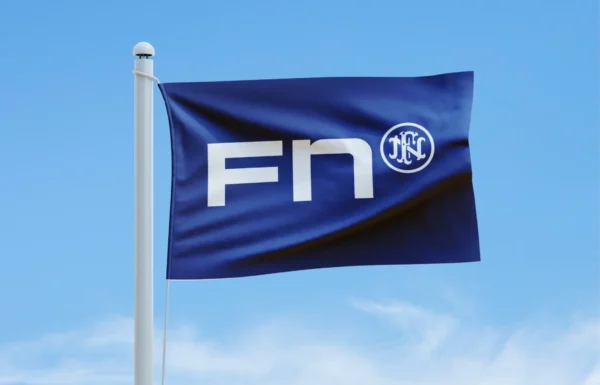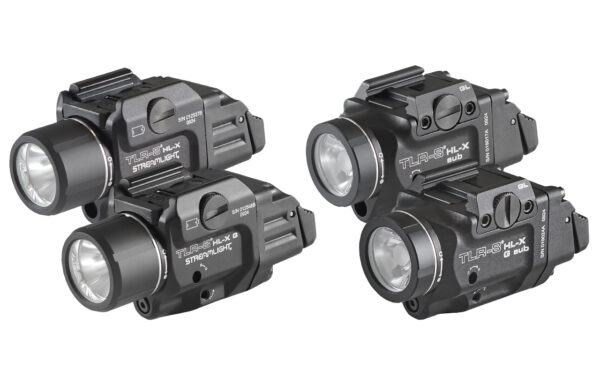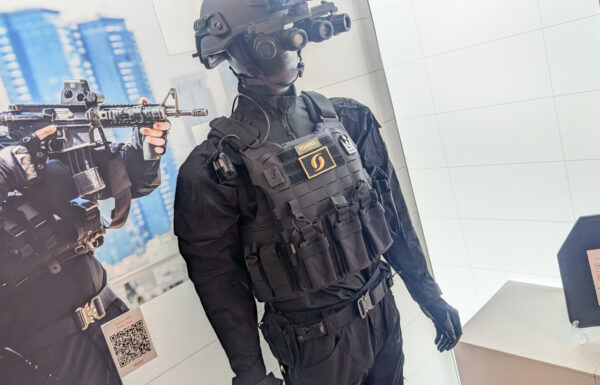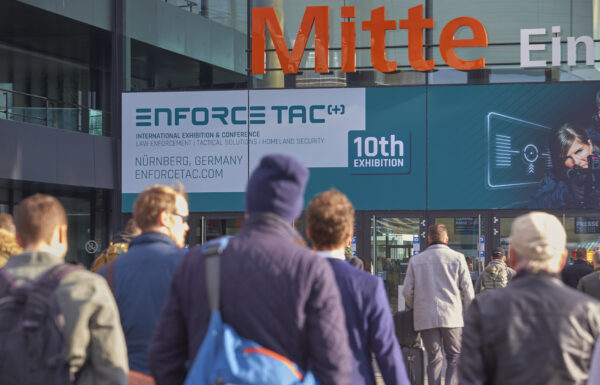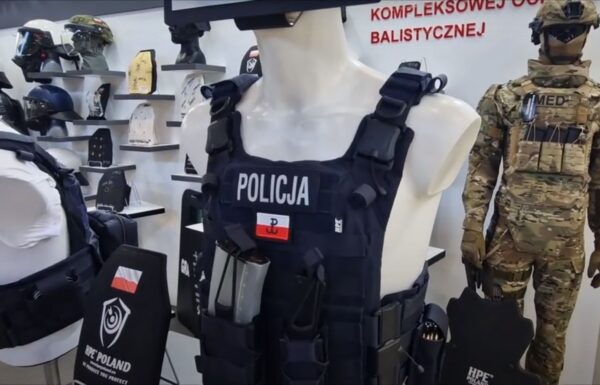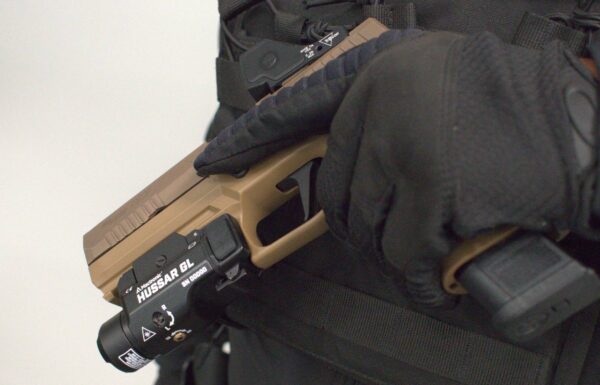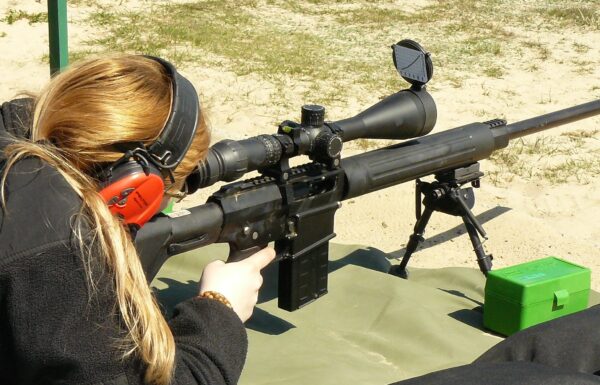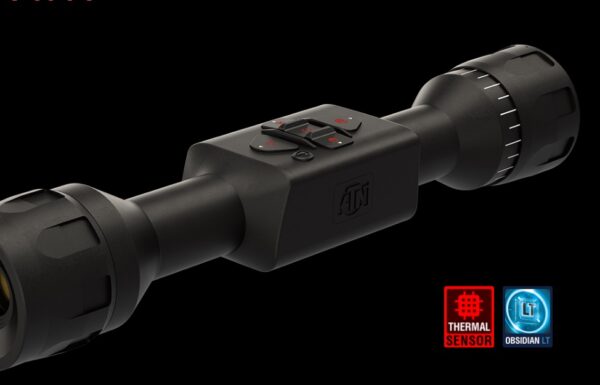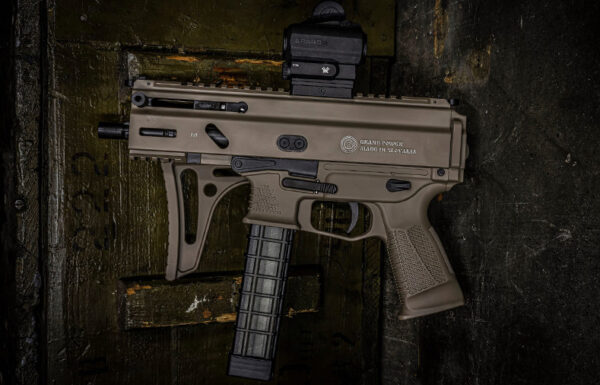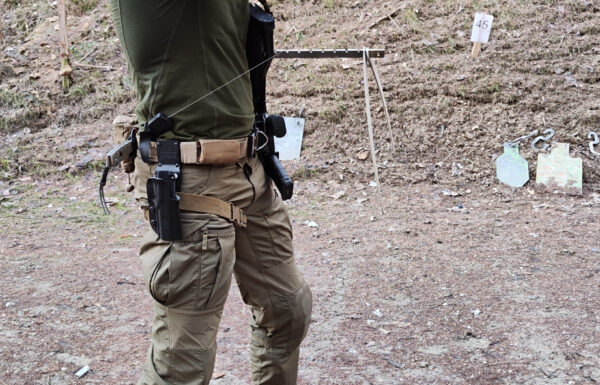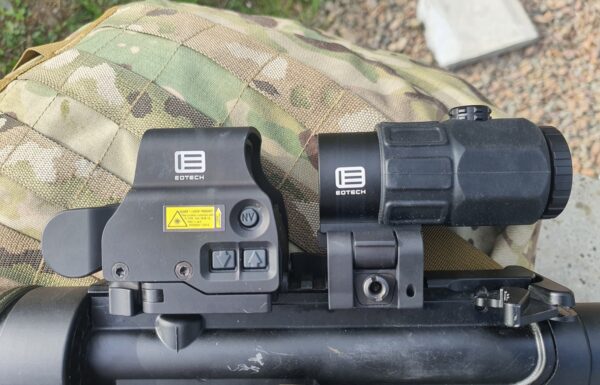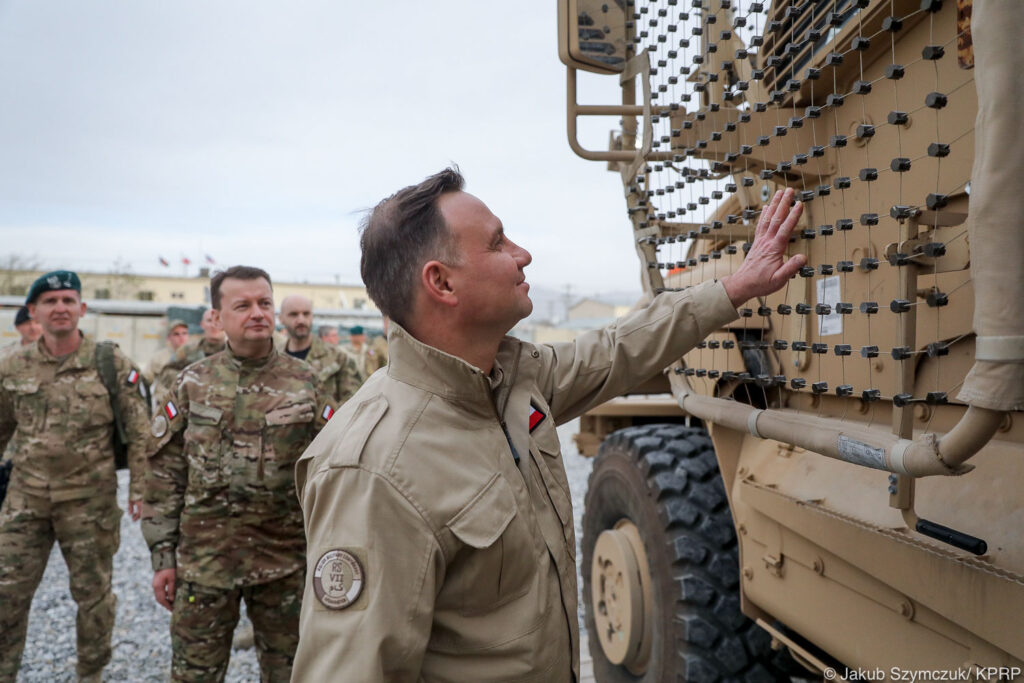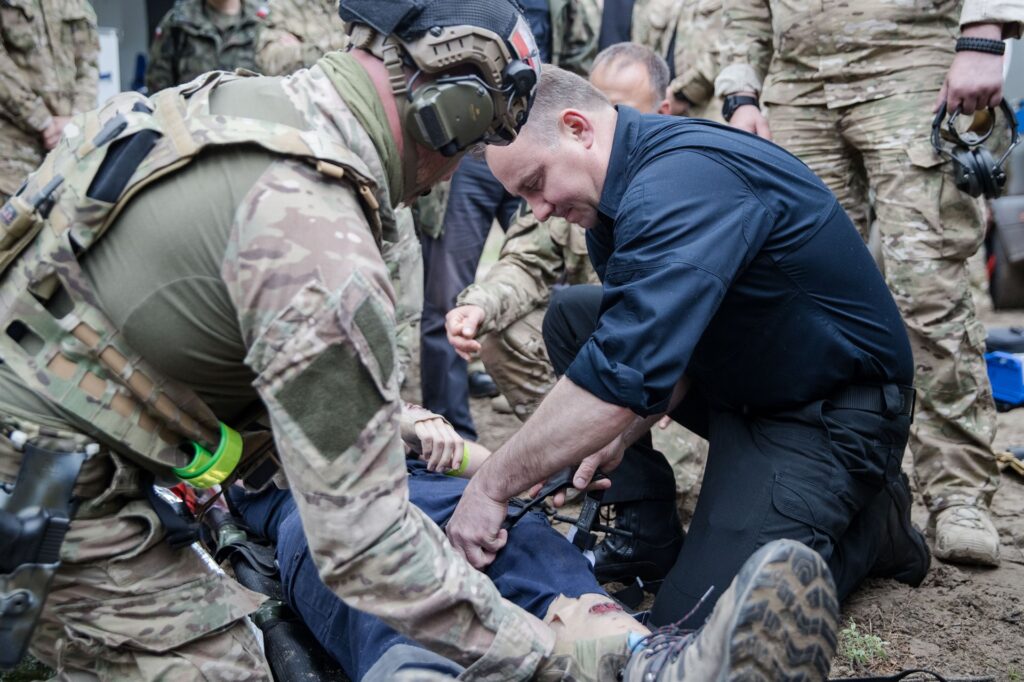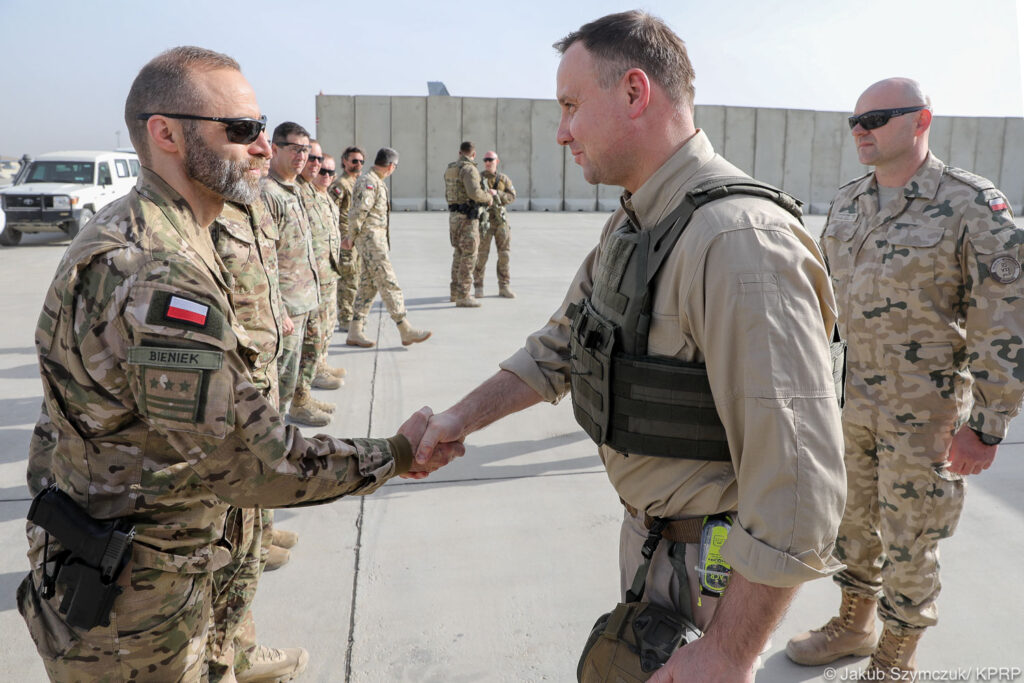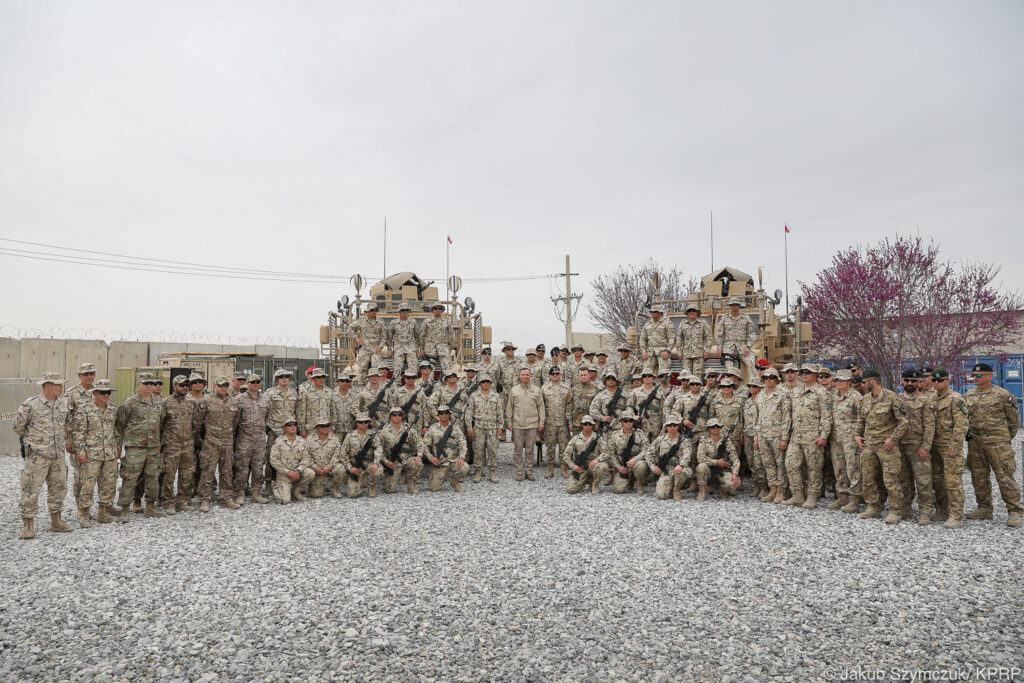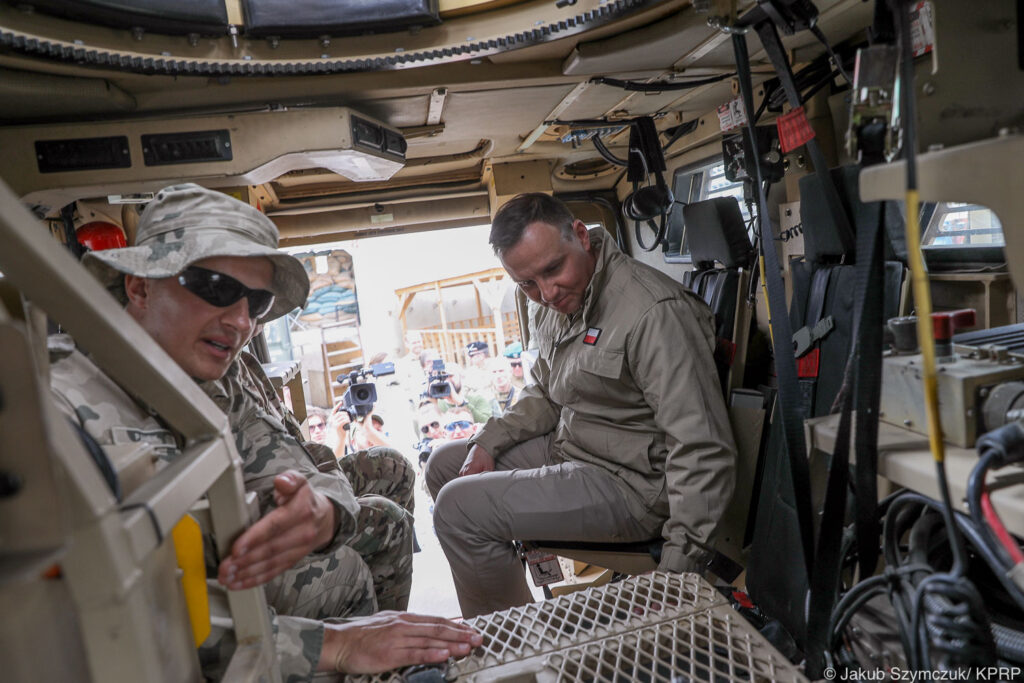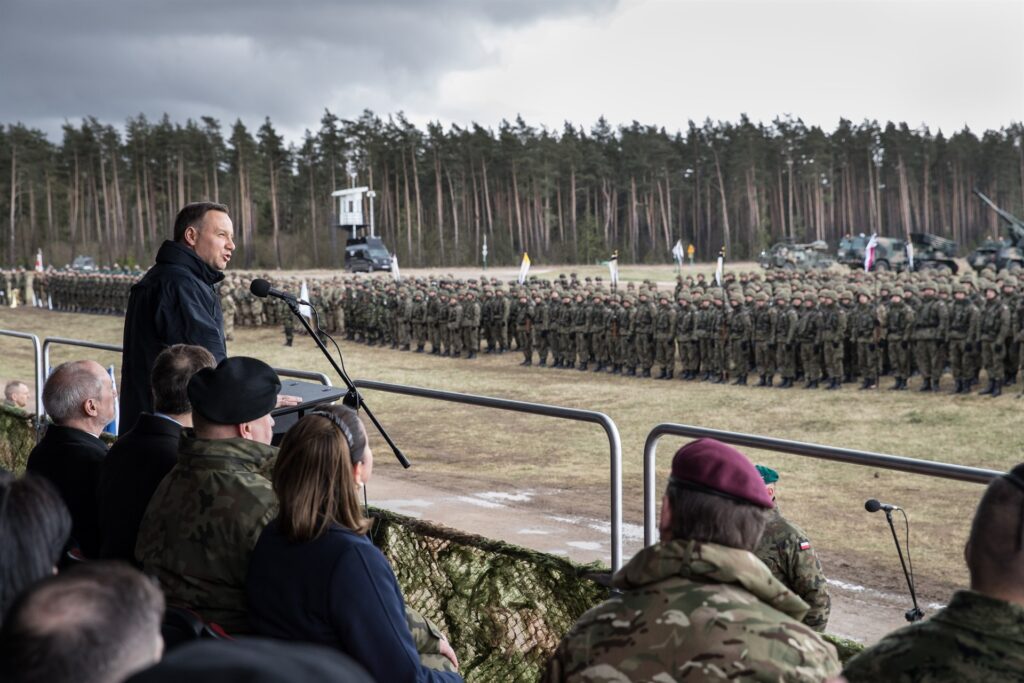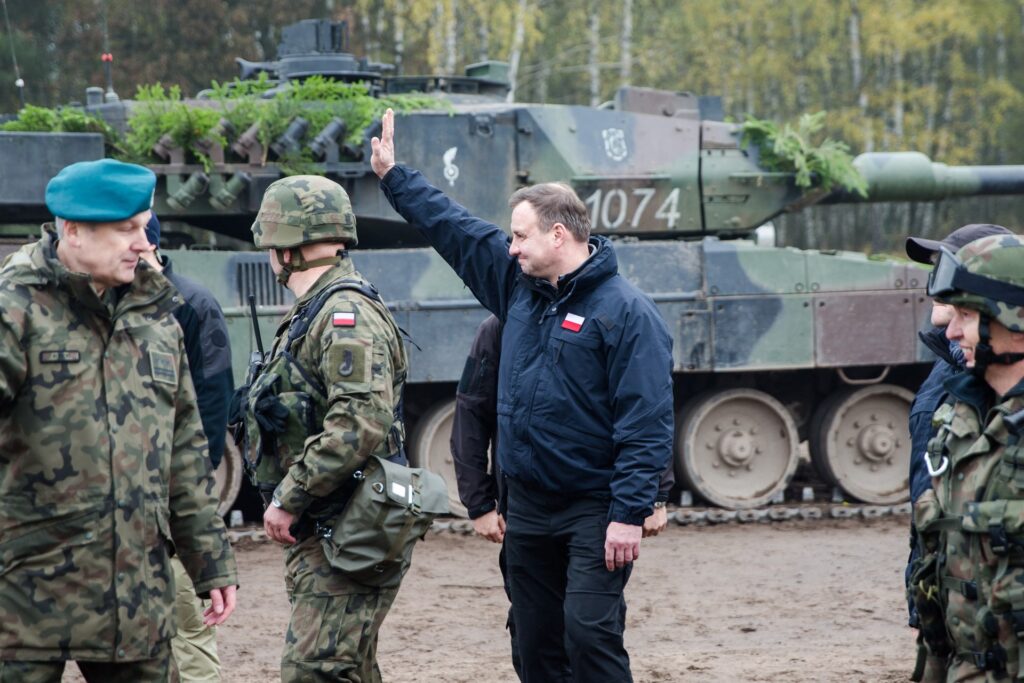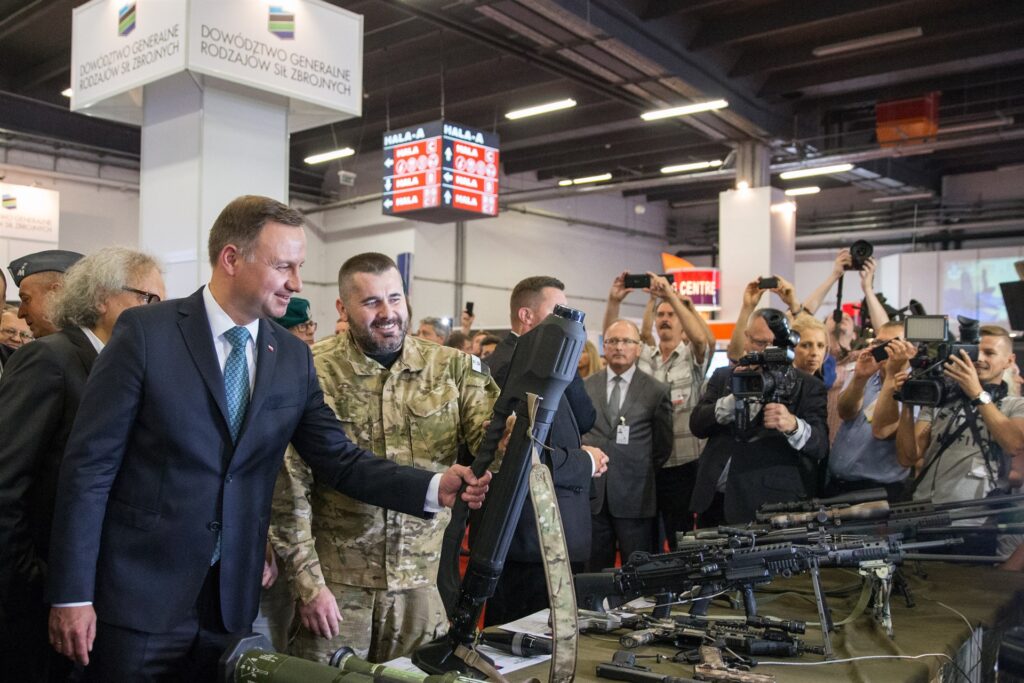Mister President, July NATO summit in Brussels showed how complicated are current transatlantic relations when it comes to global security. Poland have aimed to maintain close relations with USA for years. What is your view of Polish role as a potential bridge-builder between American and European security and defense policies.
consider safe and integrated Europe to be America’s best investment into global peace in the modern history. Similarly, strategic partnership between Poland and United States is one of the pillars of our safety. Poland is an attractive partner for United States because of its strategic position and economic and military potential. We seek to develop our cooperation further, already having measurable effects, like unprecedented increase in American military ties to Poland. Equally important is our position in European Union and participation in development of its unified defense policy. As a member of PESCO we do our best to have its activities be taken in accordance and complementary with NATO needs. At the same time, the topic of transatlantic relations remains part of my and our government agenda during all the talks with our foreign partners, both European and American. Our strategic goal is strengthening those relations, including integrity of North Atlantic Alliance, being more important than ever.
Mr. President, during the NATO summit in Brussels, you declared Polish willingness to join 4×30 initiative, what is your recommendation regarding units Polish Armed Forces could delegate as a part of it? There were declaration that Poland could be one of the main contributors to NATO Response Force’s land component after Newport summit. Do you consider that a viable development within the frame of the Alliance’s new initiative? Poland is one of the leading countries in the field of commanding special operations. Special Operations Component Command (SOCC) in Kraków performed well during its operational duties within NATO Response Forces. With that in mind, will you suggest Polish Special Forces as the spearhead of Polish contribution into 4×30?
We are in the process of military analysis of our capabilities concerning Polish contribution to 4×30 initiative. At the moment I can ensure you that Polish contribution will be adequate to our military potential and capabilities of our Armed Forces. 004 [ MILMAG.PL [ 19-02 It needs to be noted that any increase in readiness of our forces will be directly beneficial for us. In case of 4×30 initiative, we are not speaking about forces designated for things like stabilization missions, but the units prepared for defense. Because of this, the very initiative is the right concept, as we collectively confirmed at summit in Brussels. Like the rest of our engagement in NATO, it is not some kind of tribute we need to pay, but our direct contribution to the safety of Poland and the rest of the Alliance members. When it comes to Very High Readiness Join Task Force, or VJTF, they are NATO’s threat adaptation mechanism separate from 4×30 initiative. Poland, according to our declaration from 2015, will become a core member VJTF in 2020. In the same year, SOCC will start its operational duty in NATO Response Force. However, as I already mentioned, those will be additional activities improving our defenses besides 4×30 initiative development.
Specialist media in the early August were dominated by discussion regarding purchase of Australian Adelaide missile frigates. Regrettably, there is little information regarding their planed use by Polish Navy. Can you reveal your concept of use of the new units? Anti-aircraft? Securing approach to Polish harbors? Participation in building Polish naval forces within 4×30 initiative? With an option for purchase of SM-2 anti-aircraft missiles together with the frigates will you recommend integration of the ships with “Wisła” anti-aircraft defense systems?
We are facing an urgent need to rebuild Polish Navy potential. There are different ideas for its reinforcement. Multiple reasons convince me that our main maritime forces should be frigate-based. That conception was subject to long-term analyses in National Security Bureau, which, among the other results, lead to development of Polish Naval Security Strategic Concept. It is also supported by a large part of naval community.
Taking the matter as briefly as possible, the most important reasons to invest in that direction are tied to versatility of frigates and their usage potential for improving allied security.
Frigates can accomplish simultaneously multiple key tasks, like countering submarines, carry sea helicopters, and, which is particularly important, providing air defense to naval task forces, civilian and military harbors, and oil and gas depots. In that way, they can be part of the national air defense. The second reason, is possibility of tying Polish frigates into allied initiatives, like the mentioned 4×30 or operation within Standing NATO Maritime Groups. Smaller vessels are incapable of performing such array of tasks and operations.
One of concepts we analyzed, was acquisition of ships from Royal Australian Navy , which would be intermediate solution until purchase of new vessels. It would give our shipyards time to develop them in partnership with experienced partners. The more so, as currently operating frigates ORP Kościuszko and ORP Pułaski have to leaving the service within a few years.
International Defense Industry Exhibition starts early September in Kielce. Can we expect declarations regarding support specific defense projects? Can you point those which should be realized in the first place?
The main priorities are now well defined. It is primarily air defense, with Wisła and Narew programs, missile artillery program Homar (Lobster), and programs reinforcing maritime forces – including submarines and surface fleet. All those capabilities are needed by combined Armed Forces so singling individual projects would miss the greater point.
International Defense Industry Exhibitions is also a place where we talk about new technologies. When we look in that context on future potential of Polish Armed Forces, I think we should particularly observe development of new solutions in fields of command support systems, image recognition, or precision ammunition.
Polish Armed Forces await the most important modernization since 1989. Resources required to sustain all the needs dwarf the capabilities of Ministry Of National Defense budget. Will you start discussion regarding passing additional resolutions that will allow financing the most expensive programs?
Geo-strategic location of Poland at the NATO’s flank, modern threats, and years of negligence regarding Armed Forces modernization, mean we can’t allow ourselves to save on military expenses. Increasing defensive budget is not a matter of political program or one of possible options but a necessity. I am glad there is a general social and political unanimity.
I initiated discussions over increase in defense spending in the first year of my presidency, before NATO summit in Warsaw. In 2017 we made the first step in that direction, passing a resolution planning for slow increase in defense spending from current 2% of GDP to 2.5% in 2030. This is our minimum plan.
However, I think that defense budget should grow faster if the economic situation will allow it. We should already reach threshold of 2.5% in year 2024. I am well aware of the military modernization programs costs, and that development would allow for their timely completion. Mentioned resolutions are one of the possible solutions and its still an open matter if we apply them to specific modernization programs. It needs to be remembered that responsible approach to defense expenses directly contributes to our position within NATO.
Mr. President, recently you promoted a number of officers to general ranks. Could you tell us about planned changes to Polish Armed Forces command structure? What is your opinion about subjecting Armed Forces General Command and Armed Forces Operational Command to Polish General Staff?
Currently introduced changes were announced during presidential and parliamentary election campaigns, and so are proof for high consistency in maintained approach to Armed Forces. The command structure introduced in 2014 didn’t work, and got little approval from military circles. It included interesting elements, like combined arms ideas, which we will popularize, but as a whole, it failed to meet expectations. It was unfortunate that so radical changes were introduced during the Russian aggression against Ukraine and Crimea annexation. I consider it a very irresponsible decision. That’s why we introduce current changes in a slow, adaptive manner, constantly maintaining our ability to react to threats. The first step is recreation of clear hierarchy in Armed Forces and reintroducing leading role of Chief Of Polish General Staff. In my opinion, it is a highly desirable direction. These changes are thoroughly thought 008 [ MILMAG.PL [ 19-02 out and are results of long-term analyses of both the Ministry Of National Defense and the Bureau Of National Security as well as experience brought by cooperation with allied forces. I hope that parliament will start working on a necessary statue project this month. The next step will be involve return of command for individual Armed Forces and decisions regarding solutions on operational level. I think we may expect such statute project in 2019.
What is your vision of Territorial Defense Forces role in the new command structure? Should the tasks given to TDF be subject to reevaluation and evolution?
Preparing foundations of the new command system, together with Minister Of National Defense, Mariusz Błaszczak, we agreed that TDF should be subjected to Minister Of National Defense until reaching full operational capabilities. At that moment it will find itself on par with other branches of Armed Forces. That solution, from the point of TDF view has its merits, I hope it will contribute to the formation rate of that new branch of Armed Forces.
When it comes of TDF tasks, they are already defined and focused on cooperation with operational forces and protection of civilian population. Naturally, their role and specific tasks will be subject to future clarification.
Do you support plans of increasing defensive potential by formation of fourth division and moving weight of main defense line over to the eastern border of Poland?
Today, the situation is that we have disproportionately small forces comparing to potential threats. Majority of garrisons is spread across western and northern Poland as a legacy of Polish People’s Republic. It was exacerbated by disbanding of 1st “Warsaw” Mechanized Division, the division the most capable of reacting to threats coming from the east.
Formation of fourth division, which minister Mariusz Błaszczak considers a priority, I also value very highly and will support that process. However, we must be aware of high organizational and financial costs. In that context, acceleration of defense expenses, which was already mentioned, would be also warranted.
Participation of Polish military in operations in Iraq and Afghanistan, paid for with the highest price – the lives of Polish soldiers, allowed for an unprecedented quality leap in Armed Forces. For the first time since the World War Two we have numerous soldiers who acquires combat experience during front line duty. Will you plan to support means to retain veteran staff in service to pass their experience to the next generation of Polish soldiers? Do you, as a Polish Commander-In-Chief, will support future Polish participation in operations beyond our borders on a scale comparable to Polish Military Contingent Iraq or PMC Afghanistan?
Polish membership in NATO and other international organizations is not limited to benefits of stronger warranties of security, but also to responsibilities and obligations of supporting our allies as well.
As members of Euro-Atlantic community we must engage ourselves not only into matters of our region, but also in activities for global security and maintaining international peace. Deciding to send Polish Armed Forces contingent beyond our borders is always hard but I will take that decision each time when I deem it serving those goals.
It is worth noting that participation in international missions is a part of Polish foreign policy. Our involvement is appreciated by our allies and serves well Polish interests. Equally important is factor that you mentioned. Participation in allied operations lets our soldiers gain experience that cannot be acquired during training. It also serves to improve their ability to co-operate with forces of other NATO countries. It is also builds a great personal relationship capital, as I felt multiple times while speaking with our allies. Polish soldiers are giving us good name.
Mr. President, soldiers of Polish Military Contingents served in front line operations. Many of them were injured or suffer from PTSD. Do you anticipate additional initiatives intended to help the fate of veterans in Poland? If so, what actions would be the most urgent?
i attentively listen to voices of veterans harmed in missions abroad and their organizations. I understand hardships of the service and know problems and ills concerning military veterans, functionaries, and civilian workers. I assume that our country incurred a great debt from all who served Poland abroad – particularly those who were injured and ill, their families, and the fallen.
I am aware that we need changes in related legislation, and I know that veteran community expects those changes impatiently. To meet their needs, following my statutory powers, in August this year, I sent to Speaker of The Sejm presidential project of changes to statutory law regarding veterans of operations abroad. I deemed amendment of veteran rights an urgent matter. Currently, that status can’t be acquired by people who participated, even multiple times, in missions lasting less than 60 days. My project allows for summing together shorter periods of service. This is only the first, but in my opinion important amendment. Later, we should work on amount of aid given to veterans and their families, including psychological help, but also support vocational training to injured and aggrieved. I am convinced that future legal changes should focus on those areas.
This article was originally published on MILMAG 05-06/2018


